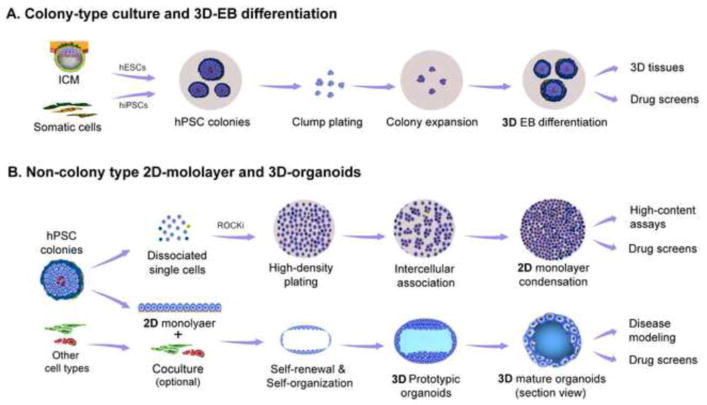Figure 2.
Schema of 2D- and 3D-dimenisonal culture platforms. (A) Flow chart of hPSC colony-type culture and its downstream applications: hESCs [generated from the inner cell mass (ICM)] and hiPSCs (established by reprogramming somatic cells to pluripotent stem cells) are collectively named hPSCs. hPSCs conventionally grow as colonies on plastic dishes that are coated with extracellular metrices, form embryoid bodies (EBs) in suspension culture, and differentiate into 3D-tissues for downstream applications. (B) Flow chart of 2D-monolayer and 3D-organoid culture: (top panel) Heterogeneous hPSC colonies (top view of one representative colony in a culture dish), showing different cellular states in the periphery and center of the colony, can be homogenized as a 2D-monolayer for high-content imaging and high-throughput drug screening (HTS). (lower panel) 2D-monolayer differentiation, optionally cocultured with different cells (e, g., human umbilical vein endothelial cells) in the presence of proper extracellular matrices, can self-organize into 3D-organoids for disease modeling and drug screening.

